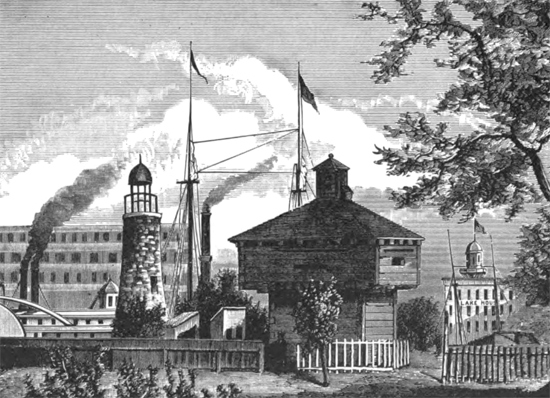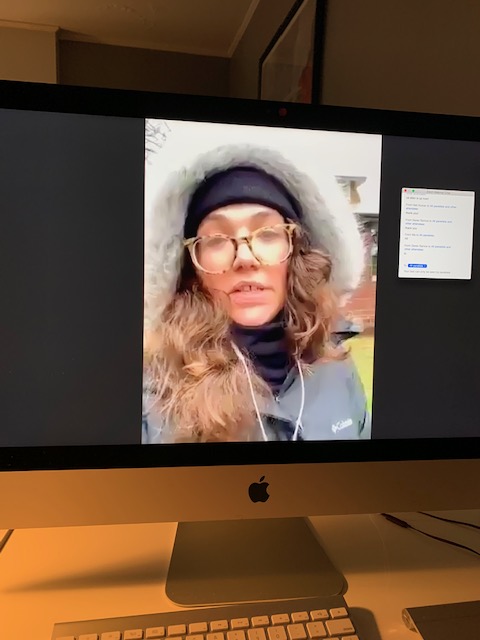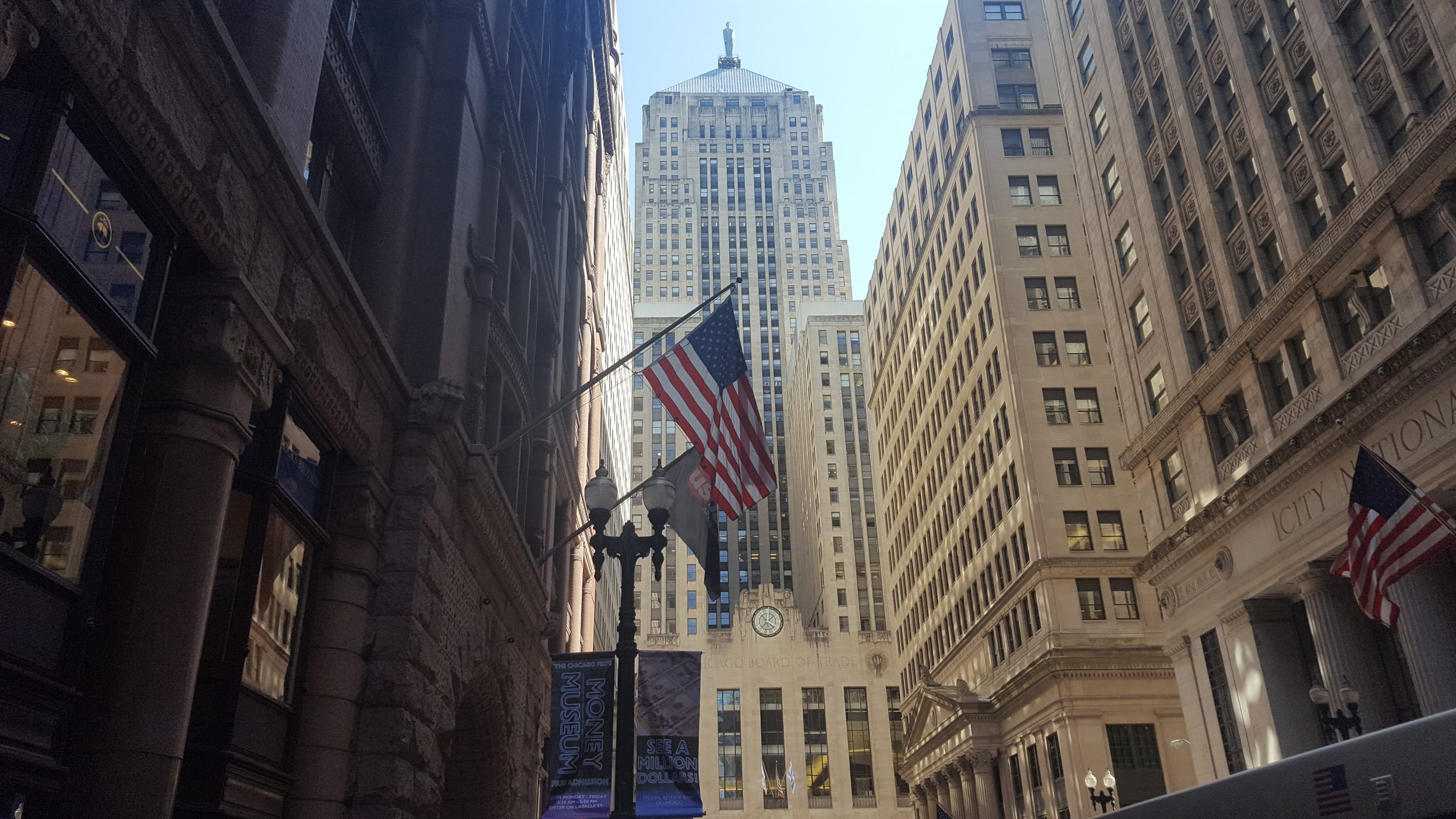When one thinks of architecture in Chicago, lighthouses might not come to mind. But Chicago, long a preeminent American port, has an extended history with these vital, vertical structures.
We research stories from Chicago history, architecture and culture like this while developing our live virtual tours, in-person private tours, and custom content for corporate events. You can join us to experience Chicago’s stories in-person or online. We can also create custom tours and original content about this Chicago topic and countless others.
Learning Chicago Lighthouses History
I recently had the opportunity to hear a fascinating talk by Chicago lighthouses expert, Donald J. Terras. Terras is the author of Grosse Point Lighthouse: Landmark to Maritime History and Culture (Windy City Press, 1996) and Lighthouses of Chicago Harbor: Their History, Architecture and Lore (Windy City Press, 2006).
The first area lighthouse was constructed at the mouth of the Chicago River, years before the city incorporated. The 1831 structure had some problems, though, and soon collapsed. Its 1832 replacement was forty-feet high and stood near Fort Dearborn. We’d walk right past it on our Downtown Bucket List private tours if it were still standing.
Chicago’s first lighthouse was also the first on the Great Lakes. As of 1848, there were 59 lighthouses on the Great Lakes. Chicago lighthouses were crucial for navigation; they marked dangerous passageways as well as harbor entry points. Hundreds lined the Great Lakes, but lighthouses became obsolete with modern navigational technology.
The Second Lighthouse
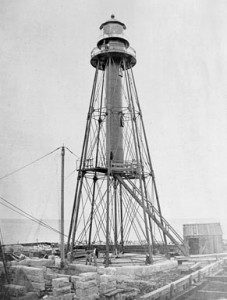
With the opening of the Illinois and Michigan canal in 1848, Chicago became the connecting point between the eastern seaboard and the Mississippi River… and soon, the nation’s busiest port. The first lighthouse quickly proved inadequate for such traffic.
Made of iron and in an octagonal design, the second Chicago lighthouse was built in 1859 out on the end of one of the newly built piers and was intended to be more visible and useful than the old lighthouse, which was by this time relatively hidden behind other structures inland. But the octagonal tower had its challenges, as well: its light was often obscured by the thick smoke from steamers and nearby factories.
The Grosse Point Lighthouse
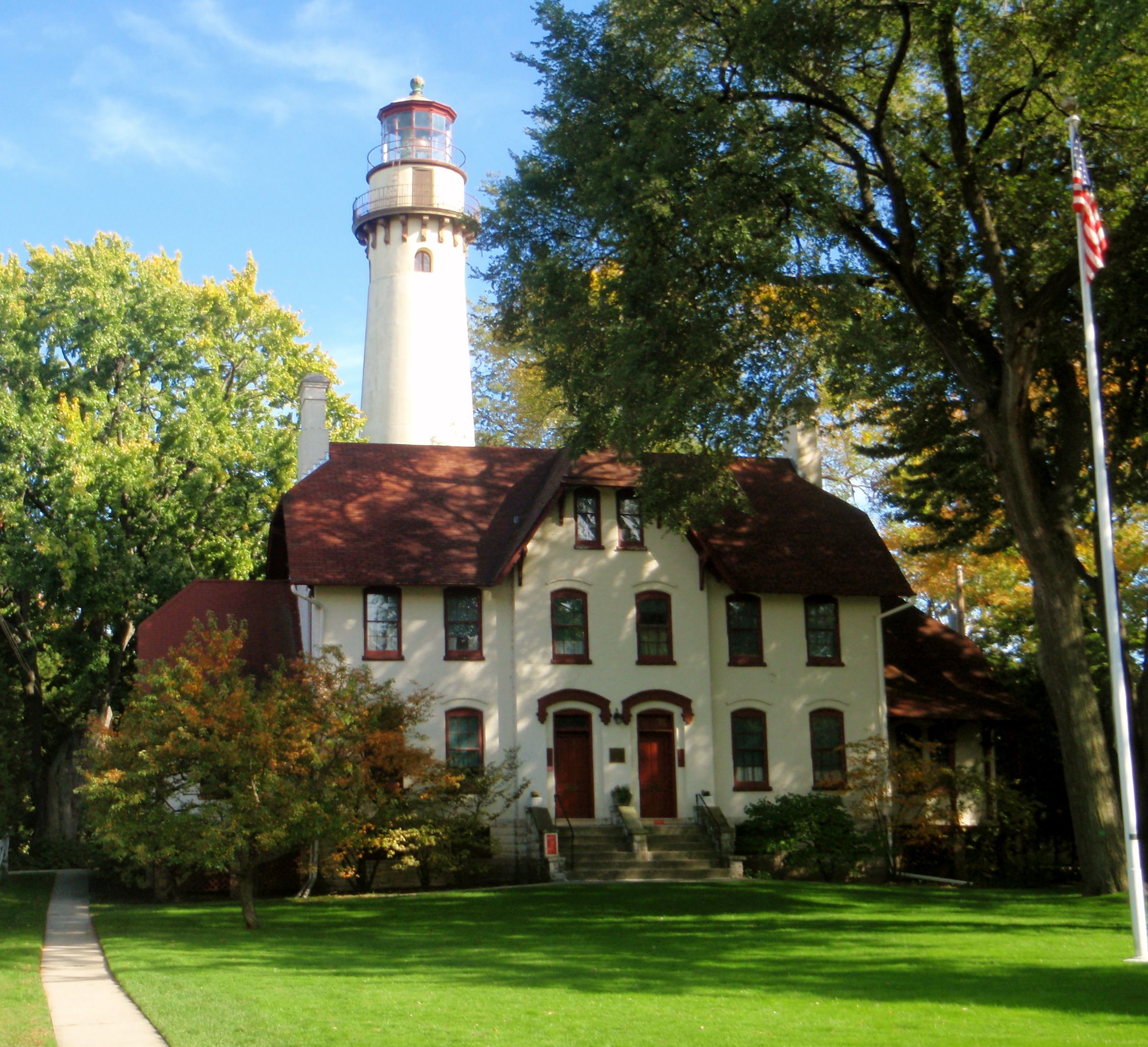
After the Great Fire of 1871, the Lighthouse Board decided to build a substantial masonry lighthouse 13 miles north of Chicago at Grosse Point in Evanston. Completed in 1872, this Grosse Point lighthouse superseded Chicago’s. Ships relied heavily on this navigational aid; once spotting it, they would hug the shore down to the Chicago harbor. The Grosse Pointe lighthouse still stands today and they seasonally offer historical tours.
We delved into the history of this lighthouse, its prominent location, and Evanston generally for a custom virtual tour. Reach out to us to learn more!
The Chicago Harbor Lighthouse
In the 1880s, a breakwater was built to protect Chicago’s harbor. Plans began for a new, powerful lighthouse for the Harbor of Chicago, which, the Lighthouse Board proclaimed, “was the most important on the lakes, with a greater average number of daily arrivals and departures during the season of navigation than any other in the United States…” The new lighthouse was to stand at the mouth of the river, not far from where the original lighthouse was located.
The city was also preparing to shine before all the world during the 1893 World’s Columbian Exposition. The lighthouse was under construction during the World’s Fair, completed just as the Exposition was ending. A state-of-the-art Fresnel lens that had been on display at the Fair was then installed in Chicago’s harbor lighthouse, illuminating for the first time on November 9, 1893. The 1859 iron lighthouse was put out of commission.
A Local Landmark
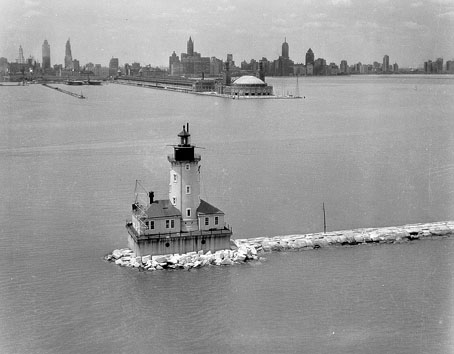
And this 1893 structure is the lighthouse we see in Chicago’s harbor today. The lighthouse is now an official Chicago landmark, and is still active, though now automated. We always love sailing past it on custom private tours of the lakefront and river.
The lighthouse was actually moved and altered in the early 20th century. The breakwater was extended in 1918, so the city relocated the lighthouse relocated to new southern tip. The structure also contains a three-story keepers living facilities, a fog signal building, and boat house.
(An interesting note about the need for a fog signal: according to lighthouse expert, Donald J. Terras, Chicago was once a much foggier place; due to climate change, there is significantly less fog today. Photos of the Chicago lighthouse covered in ice are still frequent though.)
Chicago lighthouses are among the defining works of architecture that grace our city. Too often overlooked in lists of Chicago sightseeing, they deserve lots more admiration.
Learn More About Chicago Lighthouses
For more information about American lighthouses from enthusiasts who’ve ‘done’ them all: Lighthouse Friends, Lighthouse Facebook groups: Lighthouses and United States Lighthouses, and The American Lighthouse Coordinating Committee. That last one is a non-profit corporation dedicated to the preservation, restoration, and interpretation of American lighthouses.
— Wendy Bright, Professional Tour Guide
ABOUT CHICAGO DETOURS
Chicago Detours is a boutique tour company passionate about connecting people to places and each other through the power of storytelling. We bring curious people to explore, learn and interact with Chicago’s history, architecture and culture through in-person private group tours, content production, and virtual tours.
